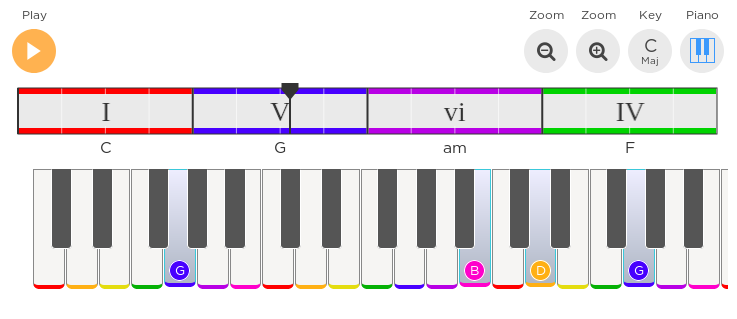The only thing about the distribution of voices that Roman numeral analysis provides is which voice is in the bass.
Just some background on the symbols...
The Arabic numerals added to Roman numerals are a historical hold over from figured bass and an approach to harmony that was more about counterpoint. The figures told a keyboard accompanist what type of chord to use to harmonize a written bass part, but they were free to improvise the voicing and figuration of the chord. Most of the time there would be written melody parts as well. So in essence the Arabic numerals told the keyboard accompanist how to play harmonic filler with their right hand with no particular concern for the exact voicing or figuration of the chords.
So there is a odd historic evolution of the chord symbols. Figured bass put numeric figures on a written bass part. Later in the Roman numeral analysis (RNA) system the figures were added to the Roman numerals - which give only a chord root - and the bass part is abstracted. Neither system gives specifics about the upper voices.
EDIT
After re-reading your question I'm confused about what exactly you are trying to figure out.
Is there any possible way to have known that the G would be above the B and D...
Yes, sort of... In Roman numeral analysis (RNA) you can indicate the G is above the B and D by using the 6 figure - like G: I6. But, properly speaking that I6 means the third of the chord is in the bass. It does not necessarily mean G is above the D. Listing tones from bass up to treble I6 can mean B G D or B D G.
...or is that information not part of the roman numerals above...
It isn't clear if the screen shot you provided is of software that cannot display the Arabic figures on the Roman numerals
...or is that information... simply a style choice / inconsequential.
I would say it is not inconsequential and is very important to style. Pop/rock style doesn't typically use RNA for chord symbols so it's a bit hard to explain. Pop/rock often uses chord names and 'slash notation' - like F/C to mean an F major chord over a C bass. In RNA, in C major, it would be C: IV6/4.
Pop/rock often uses chords in root position in which case the Arabic numeral figures might seem inconsequential. Or, if the slash notation is used, some people aren't even aware of the concept of chord inversion.
Nevertheless, chord inversion is important in rock music. In a progression that is supposed to be played with all root position chords, if the bass starts playing the thirds of the chords, it won't sound right. Regardless of the type of chord symbols used, software features to display chord symbols, or a musician's understanding of these things, the inversions are being used and they are an important aspect of any musical style.


I- or does it also do Arabic numerals - likeI6orIV6/4?